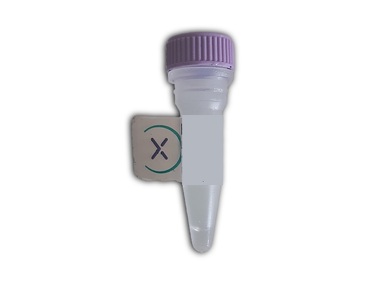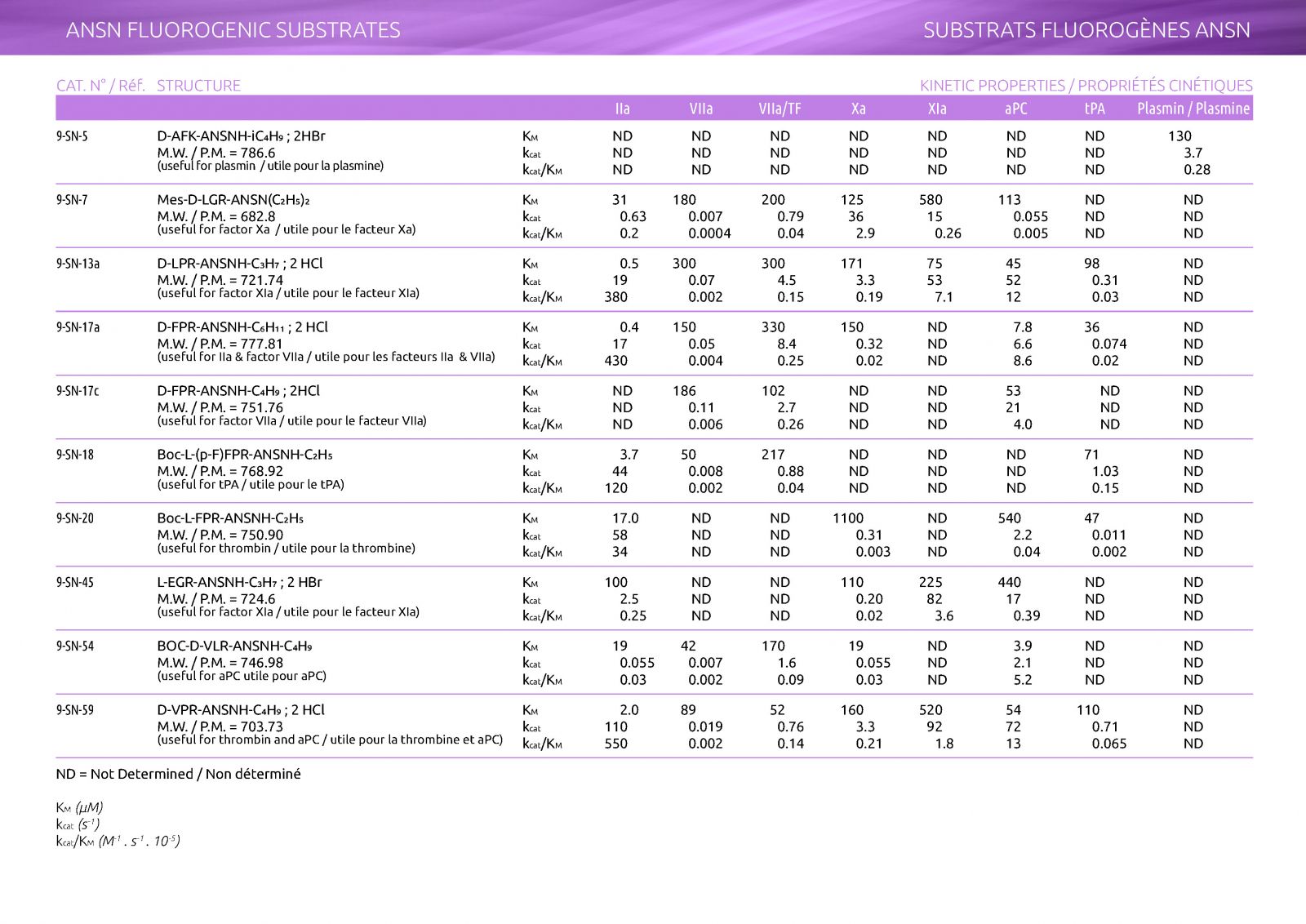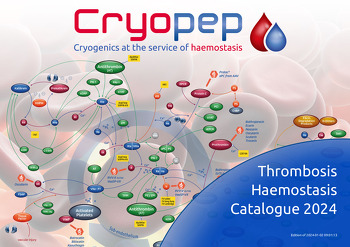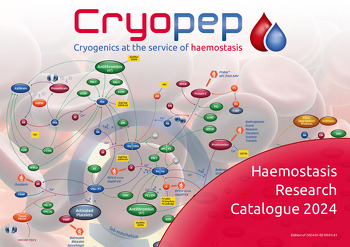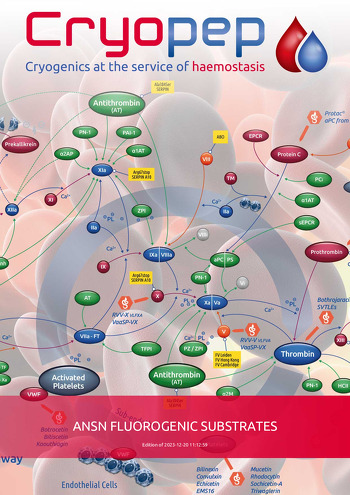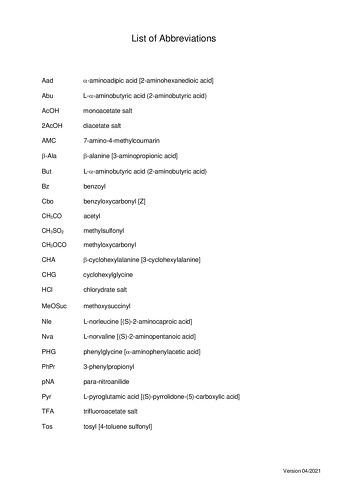The kinetic properties identified on the following page will aid in the selection of an appropriate substrate. The ANSN substrates have proved to be especially useful for the analyses of FVIIa. Although the substrate hydrolysis rates are relatively slow for FVIIa alone, only a few compounds like compound SN-17a exhibit a large change in kcat when tissue Factor is incorporated into the assay system.
The ANSN-based substrates are provided as 10 mM stock solutions in DMSO. Assays are typically conducted in physiologic buffers containing Hepes or Tris, with substrate concentrations ranging from 1 to 100 µM.
The relative change in fluorescence is monitored at a 470 nm emission wavelength with a 352 nm excitation wavelength.
Light artifacts can be minimized by employing a 390 to 450 nm long-pass cutoff filter in the emission beam. The stock substrate solutions in DMSO could remain frozen at 4° C or colder, and should be protected from light. Under these conditions the compounds will remain stable for over one year.
Substrates containing the fluorescent reporter group 6-amino-1-naphthalene-sulfonamide (ANSN) are useful compounds for monitoring the enzyme activity of various serine proteases. In this class of is compounds, the ANSN reporter group linked (in the R1 position) to short tri-peptide sequences.
The peptide sequences are designed to optimize the interaction between the enzyme and substrate. Additional components which may be added to the R2 and R3 positions reflect changes in the P’ subsite positions, and generally affect the kinetic parameters of the substrates. Compounds which are effective substrates are hydrolyzed between the tri-peptide and the ANSN group.
Once cleaved from the peptide moiety, the ANSN group exhibits about a 1000 fold increase in relative fluorescence.





